How to become an adventure travel guide

To begin, let us define what an outdoor adventure guide is. An outdoor adventure guide is someone who leads and teaches people how to do things like hiking, rock climbing, rafting, kayaking, canyoning, skiing, caving, and mountain biking in the outdoors.
However, it is a varied occupation that can take many forms. While some prefer to work half-day jobs in their own backyard, others prefer to spend a couple of months in an exotic area guiding a complete expedition. Some work for adventure tourism corporations, while others are self-employed.
How do I become a guide for outdoor adventures?
Table of Contents
Choose your sector and improve your skills
Typically, an outdoor adventure guide is a specialist in a certain field. Are you drawn to a particular outdoor sport, such as climbing, mountaineering, or skiing? Concentrate all of your focus on honing those skills and becoming an expert in that field. The majority of firms would choose to hire a highly-skilled rock climber who is bad at rafting over someone who is “just okay” at both.
Become certified
To work in the outdoor business, you will need to obtain certain qualifications or certificates, which may vary based on the activity and environment in which you will be instructing. A backcountry skier must obtain an avalanche certification, a rock climber must obtain a rock leader qualification, a rafter must obtain a white water rescue certification, and so on. You should do some research and talk to people in your chosen field to find out what certifications you need to work there.
Apart from these activity-specific credentials, an International Wilderness First Aid Certificate is always useful, as it is a necessity for the majority of outdoor professions. A Guiding Certification is also a good thing because it shows that you have been trained in group leadership and can handle different types of group dynamics.
Taking tests will help you improve your knowledge.
Avoid confining your knowledge to a single discipline. Customers prefer to rate their outdoor experience higher when their guide is knowledgeable about the area, so educate yourself about the local wildlife and flora, history, and geology. In particular, if you intend to guide in a particular national park, it would pay to conduct some research and become acquainted with the landscape. Local tourism businesses will be impressed if you apply with this abundance of information!
Achieve Experience
As with any profession, hiring managers in the outdoor tourist business value prior experience. They are more interested in guides who have been trained and have a lot of experience in the outdoors, so they are more likely to ask about your personal and professional history during a job interview.
If you lack professional experience, it’s a good idea to compile a list of personal travel experiences to demonstrate that you possess the requisite skills for the position. Keep track of all your personal outdoor trips in a diary that includes the locations and durations of the activities.
The Outdoor Instructor Program is ideal for people interested in pursuing a career in outdoor guiding. It combines education and certification with an internship and hands-on experience in the outdoor business. You’ll end up with an amazing resume for adventure guiding!
Apply for a Guiding Job
After acquiring all of the necessary knowledge and abilities to work as an outdoor adventure guide, it’s time to begin networking, constructing your resume, and applying for outdoor employment! Ensure that your CV includes all relevant experience, such as qualifications and significant travel experience.
Once you’ve landed your first job interview, make sure to emphasize not only your technical abilities, but also your soft skills and desire to teach others. To find good mentors, hiring managers are always on the lookout for people who are good at resolving conflicts and communicating effectively while staying calm under stress.
Pure Exploration offers year-round programs to destinations such as Iceland, Nepal, and New Zealand. We are constantly on the hunt for skilled technical instructors to ensure the seamless and safe operation of our programs.
How to become an Outdoor Adventure Guide
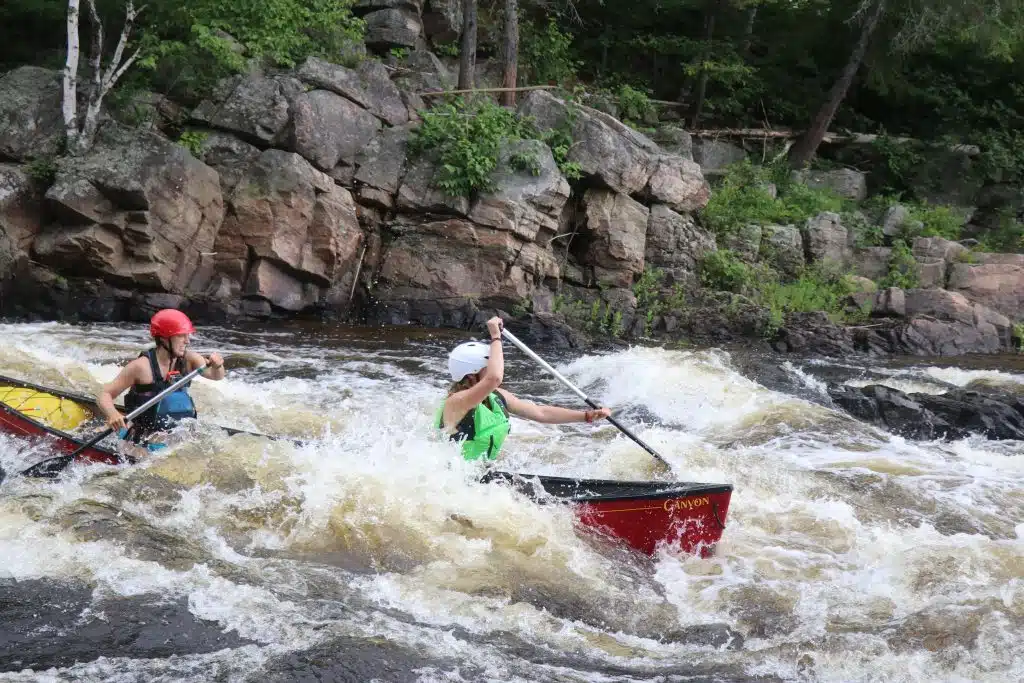
You’re on the trail in the Sierra Nevada, you round the corner and feast your eyes on the most beautiful sunset painted above mountain ranges in the distance. Or you’ve got a paddle in hand, about to go over the biggest rapid – the water splashes up on either side and adrenaline pumps through your veins. This isn’t a vacation. This is your job. If that sounds like something you’d be interested in, then read on because today I’m explaining how to become an outdoor adventure guide.

This post may contain affiliate links. If you make a purchase through one of these links, I may receive a small commission at no extra cost to you. Your support is much appreciated! You can learn more by reading my full disclosure.
What is an outdoor adventure guide?
Okay, before we get started – what exactly is an outdoor adventure guide? There are a lot of misconceptions about this profession, so before we talk about how to become one, let’s make sure we know exactly what we’re getting ourselves into.
Defining an outdoor adventure guide is actually a pretty difficult task; the job is so versatile and can take on so many forms. At it’s core, however, there is some outdoor experience (i.e. hiking, paddling, biking) and some number of people having the experience. The guide connects the experience to the people.
An outdoor adventure guide could be the man leading you on an afternoon kayaking trip in Milford Sound. Or it could be the women leading a five-day backpacking trip for youth in Yellowstone National Park. An outdoor adventure guide is the man taking you out on a zodiac to check out icebergs in Antarctica, or it could be the women taking you up in a helicopter to go backcountry skiing in British Columbia.
In each of the examples listed above, the activity, destination and duration are different. Yet all have the same common elements.
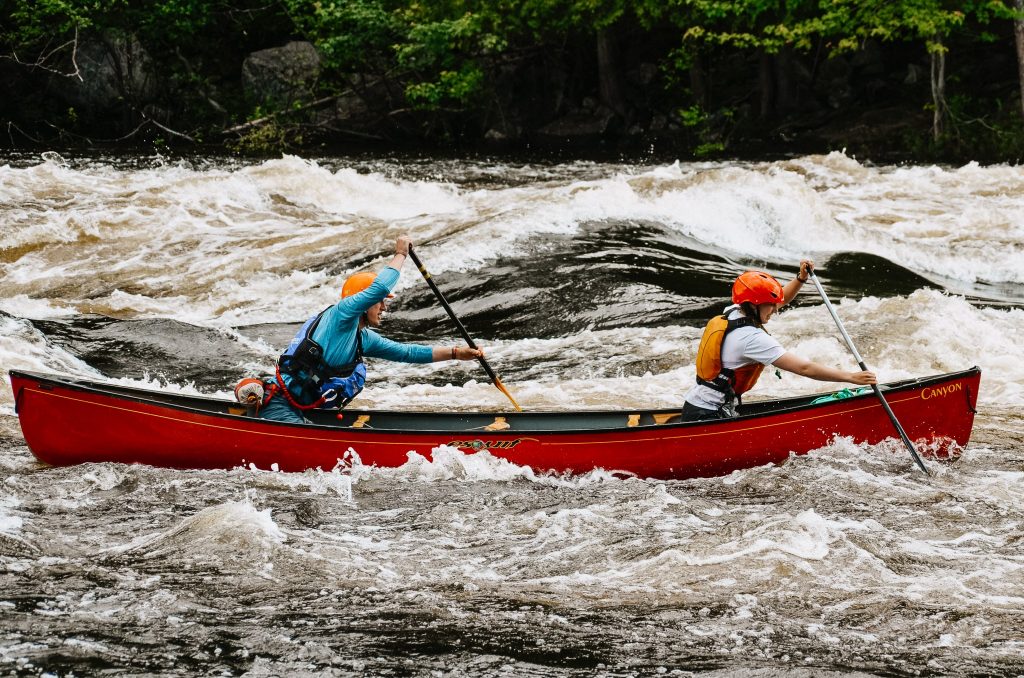
Adventure Guide’s Job Description
Below I’ve highlighted two important pillars of adventure guiding. In addition to carrying out the activity and packing / preparing for trips, these two things will take up a good deal of your time when you’re guiding.
Customer service
Customer service is central to the work of an adventure guide because, unfortunately but understandably, no customer = no money = no guiding job for you. It’s tempting to think of adventure guides as badass dirtbags with unbelievable skill, but frankly, the most successful guides are extremely professional and ensure their customers have an unparalleled experience.
This can mean different things for different guiding jobs, but at a minimum it means keeping your clients comfortable and happy as close to 100% of the time as possible. It means problem-solving for your clients, resolving conflict in the group, calming their nerves or just answering lots and lots of questions.
When you like your clients, this can all be pretty easy. I’ve guided some absolutely wonderful and kind people. But I’ve dealt with my fair share of bad clients too (ones who criticize me, undermine my authority, or offer their offensive views on politics and women).
Leadership
Being an adventure guide is really being a leader in a high-risk environment. You are responsible for making decisions that keep the group safe under uncertain circumstances. What will you do if someone breaks their leg on the trail? How will you navigate conflict in the group? What if the weather is terrible and everyone is miserable? There are plenty of things that can go wrong in the backcountry and your job is to lead your group confidently and compassionately through whatever challenges arise.
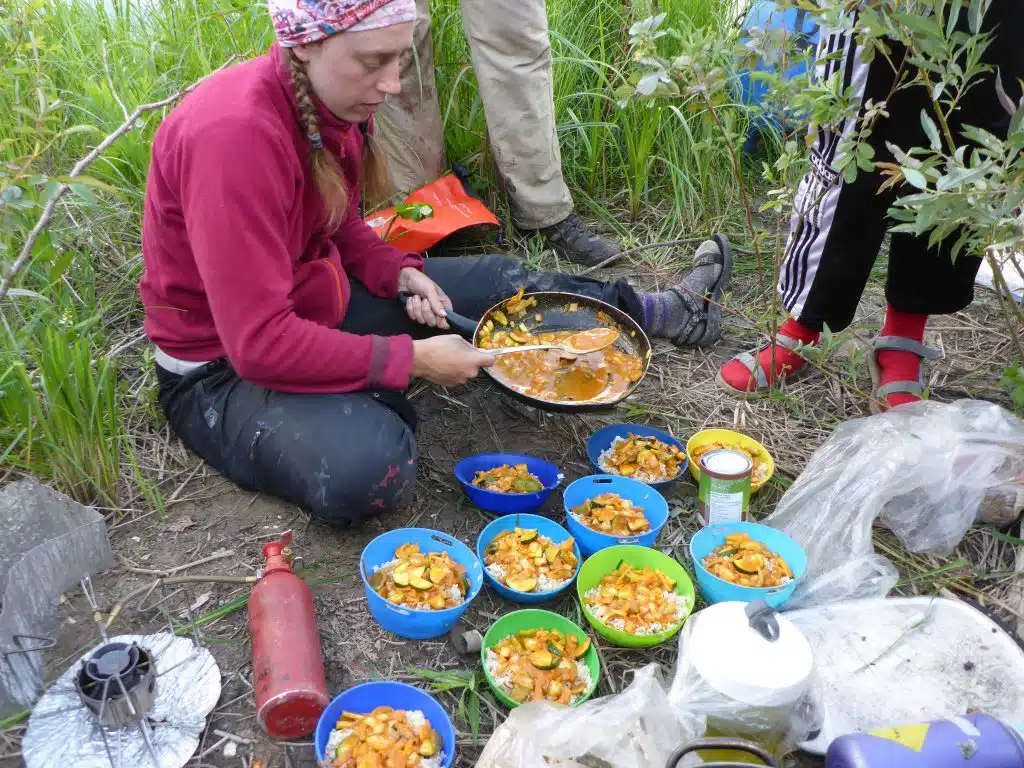
What are the hours like?
Again, this can really vary but in general they tend to be much more than a 9-5. I’ve included three ‘typical’ days I had while guiding to illustrate what they could look like, but again, this will vary depending on the specific type of trips you’re guiding.
Typical Day: Prepping for a Trip
When I was canoe guiding, pre-trip preparation usually required 16-18 hour days. Some days I would wake up at 6 am to take the food I was dehydrating out of the ovens, then have breakfast at 8 am with the other guides. After breakfast I would take out the dehydrating food that hadn’t been done yet, finalize route planning, complete our trip reports outlining where we’ll be and when (and what the emergency access points and phone numbers are). There might be training for the guides to attend, then it’s packing and repairing tents and fixing the skid plates on canoes. Finally before bed I would prepare yet another tray of food to go into the oven for dehydrating (so much dehydrating food) and head off the bed. And bam, all that work and I just made $70.
Typical Day: Guiding on a Trip
Once my group was on the water, I was essentially working 24/7. From 7 am to 10 pm, I’m ‘on’ making fires, cooking food, chilling with my campers, paddling, portaging – all that good stuff. And then from 10 pm to 7 am I’m ‘on call’. Very rarely did my campers need to wake me up, so usually this time was undisturbed. These days, on the river with teenagers, are my some of my favourite days of my life.
Typical Day: Day / Half Day Trips
When I was in Nunavut, I might start at 8 am and prep for a hike that started at 9 am. I’d get back at 12 pm, unpack the gear, repack gear and get myself ready for a 2 pm kayaking trip. I’d get back at 5 pm, unpack the gear and hang it to dry, complete two trips reports. And call it quits at 7 pm.

How much do adventure guides make?
It really depends! Guides are typically paid on a per-day or per-week basis. The lowest I’ve ever heard is about $50 per day and highest is $500+ per day. That is a huge range!
Typically the biggest factors are your prior experience, your qualifications, how risky / remote the job is and the type of organization you’re working for. Summer camps and non-profits tend to be at the low end of the spectrum. Commercial outfitters operating in remote areas like the Himalayas or Antarctica are much higher.
Now, even if you’re at the high end of the spectrum, that’s not to say you’ll make $500 per day everyday. Guides only get paid for the days they work during the months they have contracts (so if you went $500 x 365 = $182,000 …. sadly that is not the case). For example, I was offered a summer contract that had would have paid me $225 per day, but they only needed me guiding 3 days per week, so ultimately I didn’t take the job.
What about tips? If you’re working for a commercial guiding company with clients, tips could make up a big part of your income. However, it varies considerably. When I was guiding in Nunavut, my daily tips ranged from nothing at all to $100 per day.

Where do adventure guides work?
Well, basically anywhere people take trips! Popular guiding locations include Western Canada, Western US, Patagonia, the Himalayas, the Arctic, the Antarctic, and Oceania – but there is demand just about anywhere.
What does a typical year looks like for an adventure guide?
Guiding jobs tend to be seasonal and employment is based on seasonal contracts. You might be a canoe guide in northern Canada from May to September and then be a ski guide in British Columbia from November to April. I have friends who guide in the Arctic from April to August and then the Antarctic from November to February. That said, I also have friends who guide in Australia year round. Basically you follow the seasons when your activity is on.
Adventure Guiding isn’t for Everyone
I promise I’m not saying that to discourage you. I was a canoe / hiking / kayaking guide for five summers while in university, but when employers started talking to me about joining full time after graduation, I had my doubts. As I’ve written in the post Why I Willingly Quit Wilderness Guiding to Work in an Office, there were elements of guiding I didn’t think I could sustain long term (I wanted a home base and something with less variable pay).
If you’re reading this post and thinking “Yeah, I don’t know if this is for me after all,” there are plenty of other outdoor adventure jobs that don’t involve guiding.
Outdoor jobs that aren’t Adventure Guiding
Some people want to work in the outdoor industry without being an adventure guide themselves. Outdoor educators are quite similar to adventure guides, however instead leading clients on incredible adventures, outdoor educators’ primary responsibility is leading their students to learn and grow.
Outdoor instructors teach specific skills / qualifications, like wilderness medicine or whitewater rescue.
There are also many jobs working behind the scenes at an adventure guiding company. This could include doing sales and marketing, logistics, or equipment management, just to name a few. The function of these jobs is more traditional, but occur within the context of the outdoors and can offer some pretty nice perks. I have a friend who did managed bookings for a heli-ski company, and on her days off she could join groups if there was space on the chopper.

How to become an Outdoor Adventure Guide
If after reading all that, you still want to become an outdoor adventure guide, read on. I won’t sugar coat it – becoming a guide takes commitment both in time and in money.
Get Outside: Finding Your Niche & Building Your Skills
First and foremost, you need to get outside and begin building your outdoor toolkit. Some skills – like fire building, navigation, knot tying and tent set up – are fairly universal across all outdoor activities. Other skills – like paddling, mountain rescue, biking – are unique to specific activities.
When it comes to guiding, it’s better to be an expert than a jack of all trades.
It’s better to be a highly proficient mountain climbing but trash at paddling than to be just okay at both. No one hires ‘okay’. Choose the outdoor activity you want to pursue and then double down on mastering all of the related skills.
For me, it’s whitewater canoeing. I still take whitewater paddling courses to improve my technique and am qualified as a whitewater rescue technician. I learned how to replace the canoe’s skid pads or fix the thwart if it was to break. Now, I also like hiking and kayaking in my free time, but that’s not my ‘thing’ so I don’t get those qualifications or apply to those types of jobs.
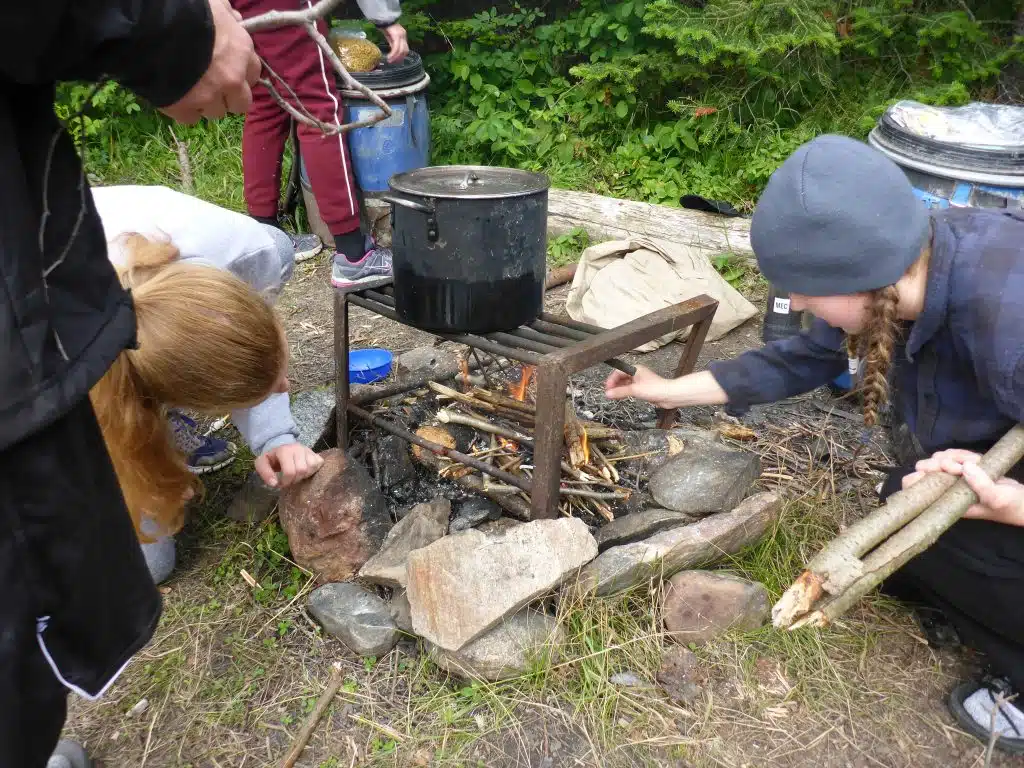
Get Qualified: Finding the Best Training for Your Goals
Once you’ve got some outdoor experience you will need some qualifications. There are dozens, if not hundreds, of possible qualifications. Below I’ve highlighted some of the common qualifications for a few popular guiding jobs. If you want to learn more about what qualifications you might need for a particular guiding job, you can always as an employer what an ‘ideal’ candidate would have or determine what qualifications those guides currently have based on their bios (guiding companies sometimes have an ‘Our Guides’ or ‘Meet the Team’ page on their website).
Networking is an added bonus to getting qualifications. I ended up guiding in Nunavut because of who I met at my Wilderness Advanced First Aid course. Then, three years later, the instructor for my Wilderness First Responder course really liked me; I later heard from a co-worker that he had called my employer before I was hired to endorse me.
Wilderness Medicine
Most guiding companies will require you to have some degree of Wilderness Medicine (and if they don’t require one, it may not be a good company). The most basic certification the Wilderness First Aid, which takes 20 hours to complete. Wilderness Advanced First Aid is the next level and requires you complete a 40-hour course.
If you are serious about adventure guiding, I recommend going for the next level, Wilderness First Responder, as this 80-hour course teaches a comprehension set of wilderness medicine tools and will distinguish you from other new guides. Also known as WFR (pronounced woof-er), this is the certification I have and it’s been a huge selling point for me with employers.
And you don’t have to take the first two in order to be qualified for Wilderness First Responder. You can jump right into that one.

Avalanche Skills Training
If you want to work in avalanche territory, like as a backcountry ski or a mountaineering guide, you will need to an Avalanche Skills Training certification. Avalanche Skills Training I teaches you how to identify avalanche terrain, execute a companion rescue and is recommended for anyone spending time in the mountains. Avalanche Skills Training II, however, is much more extensive and designed for people who have completed AST I, have considerable experience in the backcountry and spend most of their time in the mountains (i.e. as a guide).
Whitewater Rescue
If you want to work as a rafting or whitewater canoe guide, you should be certified in Whitewater Rescue. A beginner course usually runs two days over a weekend and is designed for beginners or recreational paddlers. The Whitewater Rescue Technician certification takes four days and is a requirement for most whitewater guides. Even working at a camp I was required to be certified as a Whitewater Rescue Technician.
Guiding diplomas
There are many colleges and universities now offering diplomas and certifications in adventure guiding. For example, Thompson River University offers an Adventure Guide Diploma; it is a two year course designed to give students a solid foundation of qualifications and experience, and then allows them to specialize in a particular field.
Diploma programs are great for anyone, but especially helpful if you don’t have much prior experience, don’t know what type of activity you want to guide or don’t have any qualifications. They are also helpful if you’ll be applying to competitive guiding companies or organizations (i.e. Quark Expeditions, NOLS).
I think these programs, if done at a reputable school, are incredibly useful. I would love to take one myself. The downside is that they are expensive (last I checked TRU is $14,000 CAD per year) and it requires a full two year commitment.

Get Experience: Finding Jobs in the Outdoor Industry
Once you have some trips under your belt and some qualifications to your name, it’s time to apply for outdoor adventure guiding jobs. I’ve seen some other posts link to jobs like NOLS and Outward Bound, but frankly (in my opinion), if you don’t have any experience, applying to these highly competitive jobs is a waste of time. Instead, you want to network.
Networking
When you’re just starting out, I recommend seeking small outfitters working not to far away from you and sending an email. Ask for a 20 minute call to learn more about the organization. On the call, ask questions about their mission, their philosophy for running trips (don’t ask them anything you could find on their website).
And toward the end of the call: “I’d love to apply for a job at your company. Do you mind telling me what the typical experience and qualifications your guides have, so if there’s anything I don’t have I can get that experience / qualification before I submit an application.”
In my experience, this works because employers love that 1) you make it clear you were interested in working for them, 2) but you didn’t just ask for a job, 3) and you demonstrated that you’re committed enough to the job to get additional experience if necessary.
Another place to network would be at outdoor adventure shows / industry events, but I’ve only found it helpful for networking with small outfitters. With a small company, the owner (and the person that does the hiring) is the one at the event. Big companies usually send a guide and someone from HR / marketing (i.e. not the person who will hire you).

Professional, outdoor-specific resume
You will want a professional-looking, error-free resume and cover letter. Together, they should provide a compelling reason for why you would be an excellent guide for them. They should also include concrete examples of what skills you have and when you demonstrated them.
Level up related skills to stand out when applying. Did you take classes on oceanography in university? Can you identify every type of bird in the lower 48? Are you a skilled photographer, an accomplished videographer or a compelling writer? Employers love guides who can do more than just guiding, so include that on your resume too.
Interviews
A lot of would-be guides trip up when explaining why they want to be an outdoor adventure guide or the most important skills required for the job. Don’t say “it seems like a lot of fun” because the employee already knows that. They also don’t care if you have fun. They care if their clients / participants have fun. Instead, emphasize how important the outdoors has been in your like and how passionate you are about providing others with a similar experience.
Similarly, when discussing the important skills for the job, focus on skills that affect the clients / participants. Being a good mountain climber or canoeist is table stakes – it’s a requirement of any guide. Instead, distinguish yourself with soft skills that affect the happiness and safety of your clients / participants. Calm when decision-making under pressure, excellent verbal communication, skilled at diffusing conflict – those are skills an employer hires for.
I have a post How to Talk Up Your Travel Experiences for a Job Interview that will be helpful if you’re interviewing for guiding jobs. It explains how to take an experience, determine the skill that experience demonstrates and explain it in a way that makes your interviewer go “damn, they’re good”. Check it out!
Be humble and manage expectations
Don’t expect you’ll be leading trips in Antarctica right away! Your first guiding job will likely be under the supervision of a more experienced guide and involve learning all the behind-the-scenes activities (cleaning and repairing gear, packing for other guides’ trips, etc). Remember that any experience is good experience.
I think your first paid guiding job is an important milestone. It’s like one big stamp of approval you can put in front of future employers that says “I can do this and someone was willing to pay me actual money to do it.” Don’t shy away from current opportunities just because it isn’t what you see yourself eventually doing.
Get out there! Now!
If adventure guiding is what you want to do, stop putting it off! Start using your vacation days to get qualifications; start networking with relevant guiding companies!
Introduction to Becoming an Adventure Travel Guide
If you are reading this, it’s probably because you are considering becoming an Adventure Travel Guide or elevating your current role as a guide. You know what? You are in the right place! In this introduction we will help you understand the fantastic job and the great challenge of being an Adventure Travel Guide.
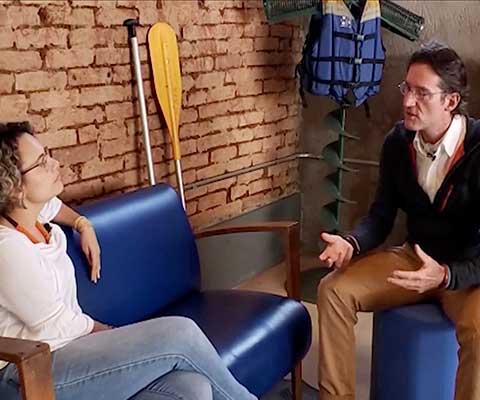
Course 2 – Guides Can Save the World
- 54 Minutes of Video
- 3 Expert Interviews
- Quiz
- $108
Sustainability is a major issue in any activity and even more so in Adventure Travel. We rely totally on a preserved environment and lively communities to perform our job, right? These will only continue to exist if we put much dedication, effort and knowledge into issues like minimum impact, climate change, greenhouse effect and carbon footprint. More than knowledge, you need to concentrate your efforts on how to educate and connect your guests, staff and local people. In a way, we want you to become an Ambassador for Sustainability. Are you ready?
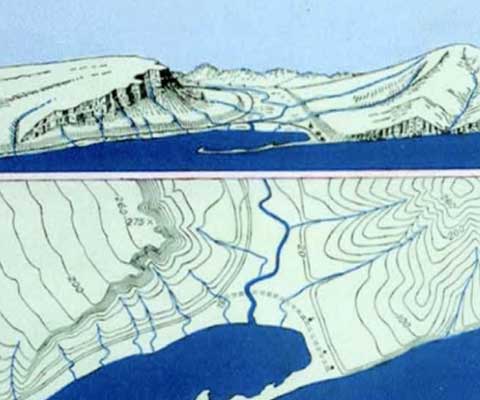
Course 3 – Master Your Guide Skills
- 54 Minutes of Video
- 3 Interviews
- Quiz
- $108
It is generally acknowledged that being a guide is about mastering activity techniques: rappelling, horse riding, kayaking for example . Well this expertise is absolutely necessary but surely not enough! In this section we will concentrate on universal technical skills, the ones that apply for any activity and any destination: we will talk about navigation, natural phenomena interpretation, First Aid and Wilderness Medicine.
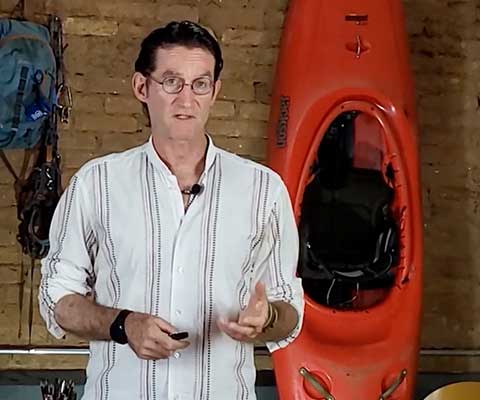
Course 4 – The Role of a Guide in Safety & Risk Management
- 66 Minutes of Video
- 5 PDF Handouts
- 5 Tutorials
- Quiz
- $108
Safety is central to Adventure Travel Guiding and activity training always takes this into consideration. But have you ever looked at safety through the eye of a Safety Management System? In this section you will learn the 3-step method of Risk Analysis and the importance of procedures and reports such as a Standard Operating Procedure (SOP), an Emergency Action Plan (EAP), a Trip Report and an Incident and Accident Report (IAR). With the help of tutorials, you will understand better your role as a guide in running a Safety Management System. This is a new kind of approach to learning these skills and we hope you’ll enjoy it.
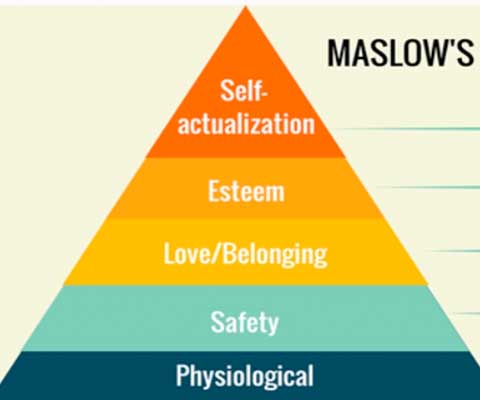
Course 5 – Customer Service & Group Management
- 45 Minutes of Video
- Supplemental Reading
- Quiz
- $108
As you guide you’ll meet hundreds of people: the fit ones, always happy ones and of course the tired, sick, bored … Being a guide requires liking people! If you don’t or if you get tired, you may want to consider changing your plans. In this section we will learn the specifics of Customer Service outside your guests’ comfort zone and how to manage groups in the outdoors. And to see that as a guide, you are a leader, so act as one!
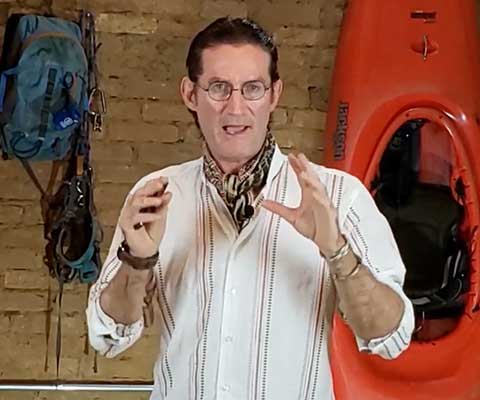
Course 6 – Natural & Cultural History Interpretation
- 45 Minutes of Video
- Supplemental Reading
- Quiz
- $108
As you guide you are the one on stage! You’re the star of the trip! It takes a lot of energy and you’d better have your bag of tricks filled. In this section we will give you tips for effective public speaking and for telling stories: this is how you will transform a good trip into an outstanding experience.
Guide Training Bundle
Enroll in All the Courses in Adventure Travel Guide Track and Save
Become an ATTA Member and Save! Learn More.

If you are not completely satisfied with the course, we will provide you credit to another course or a refund on your purchase.
Your Course Instructor
Jean Claude Razel
Jean-Claude has over 30 years’ experience in adventure activities and has always dedicated a lot of time to training adventure guides. Initially focused in mountaineering and climbing, Jean-Claude is now active in the whole chain of the adventure sector. His company Alaya, created in 1997, is the reference outdoor company in Brazil. Alaya’s activities are certified in safety management according to ISO 21101. As a manager of the Brazilian National Rafting Team, Jean-Claude won 6 world championships. Very much concerned with sustainability, he made a point in certifying his company as a B Corporation: companies that are not the best in the world but the best FOR the world.
Want to see if this course if for you?
Try our free preview courses. They’re packed with content to elevate guide skills.
Access Free Course Materials and Introduce Yourself to the Instructor

We’d love to share with you key previews from this course and introduce you to the course instructor, Jean-Claude. Thanks for your interest – we will get your sample material right on over to you.
Source https://traveleronly.com/how-to-become-an-adventure-travel-guide/
Source https://www.voyageurtripper.com/how-to-become-an-outdoor-adventure-guide/
Source https://education.adventuretravel.biz/p/adventure-travel-guide-training-bundle